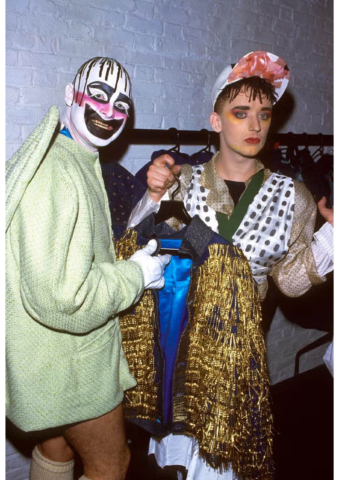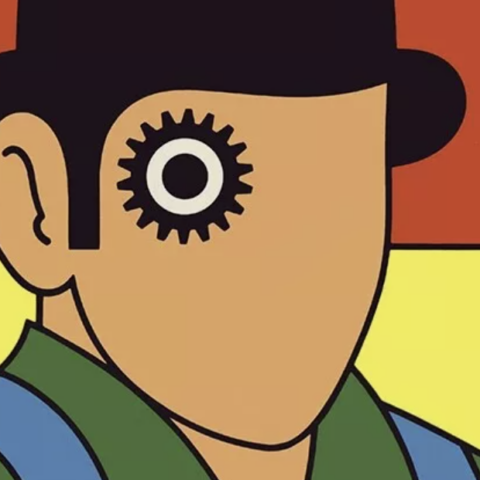Webbed; Spinning a Family Saga
By George Kowalik
In the last third of Harper Lee’s To Kill a Mockingbird, Jem Finch quotes one of his father’s morals to his aunt, saying that “You can choose your friends but you sho’ can’t choose your family, an’ they’re still kin to you no matter whether you acknowledge ’em or not, and it makes you look right silly when you don’t.” Fiction writers have long avoided this embarrassment. Many of the greatest works of literature ever written not only acknowledge family, they often allow it to entirely drive a narrative.
The theme’s popularity has given it its own genre: “family saga”. Books categorised as such chronicle the lives and doings of either one or multiple families, usually over a long period of time. It’s the catalyst for some of the most celebrated American novels of all time – William Faulkner’s The Sound and the Fury (1929) follows the Compson family over thirty years, John Steinbeck’s The Grapes of Wrath (1939) details the lives of three generations of the Joad family against the backdrop of the Great Depression… more recently, Jonathan Franzen’s The Corrections (2001) revolved around the troubles of a Midwestern couple and their three adult children, from the mid-twentieth century to the turn of the millennium.
As for English novels: E.M. Forster’s Howards End (1910) observes the lives of three families at the beginning of the twentieth century (the Wilcoxes, the Schlegels, the Basts); and Zadie Smith’s White Teeth (2000) tells a multi-generational story spanning fifty-five years, from the perspective of lifelong friends Samad Iqbal and Archie Jones.
 Cover of the first edition of Howards End, published in October 1910
Cover of the first edition of Howards End, published in October 1910
The sheer scope of family sagas means that any alignment with historical event is inevitable. Steinbeck’s East of Eden (1952), for example, details the lives of the Trask and Hamilton families in response to the changing American landscape at the end of World War I, but also uses flashbacks to go back as far as the Civil War. Elizabeth Gaskell’s North and South (1854) writes the Industrial Revolution from the perspective of the working poor in a fictional North England town. Charles Dickens’ A Tale of Two Cities, first serialised in 1859, sets its family saga in London and France before and during the French Revolution.
Classic Russian literature is also characterised by this connection. Take Leo Tolstoy’s Anna Karenina (1877): an epic mosaic in eight parts, dealing with Russia’s social transformation as a result of the liberal reforms initiated by Emperor Alexander II; or Fyodor Dostoyevsky’s The Brothers Karamazov (1879), a philosophical novel set during the same century, equally preoccupied by the relationship between Russian politics and the family stories born out of widespread social impact. The experience reading these is as transportive as opening a Steinbeck or Dickens title. We’re taken to the precise setting and historical moment being written, instructed to move around in there alongside the characters we’re reading.
 Anna Karenina was serialised from 1873-1877, but first published in book form in 1878
Anna Karenina was serialised from 1873-1877, but first published in book form in 1878
A novel not so often in the conversation is David Foster Wallace’s Infinite Jest (1996). Since publication, the book has surpassed a million sales worldwide and frequently places in “greatest novels of the twentieth century” lists. Family is the story’s absolute pivot, giving the narrative its background and determining its trajectory over Wallace’s thousand odd pages. Yet for two decades, it’s rarely been considered a family saga.
 David Foster Wallace, giving a reading in 2006
David Foster Wallace, giving a reading in 2006
It contains as much scope as Faulkner or Franzen and covers as many generations as Steinbeck or Smith. The novel’s chronology is non-linear, spanning nine years and constantly shifting between these. Hal Incandenza is our protagonist; we join him as he, his two brothers and mother struggle to hold together in the wake of the father’s death. Arguably its most powerful moment is when, in flashback, we witness a conversation between Hal’s father and his father. Our takeaway is that the father’s absence is hereditary: James Incandenza’s father was as uninterested in him as Hal feels James was.
Unlike some of the other novels mentioned, Infinite Jest is a cautionary tale. It presents a broken family, spins a disconnected web: of absence over presence, silence over communication, gestating problems over ones that are dealt with. Like families themselves, family sagas don’t come without themes of difficulty and hardship, which is a necessity. It ensures that the books we read are real – after all, why we open that first page, how we become attached, and what makes us turn to the second.
Image credits:
Howards End – HI
Anna Karenina – Wesalius
(both Wikimedia Commons)





